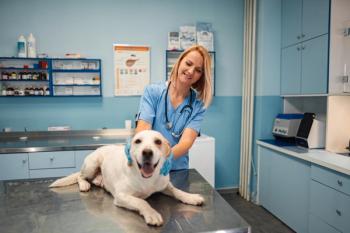
3 reasons cat owners say "no" to dental procedures
And ... we wouldn't leave you hanging just with the problems! Here's advice to tackle this trio of Dr. Karen Felsted-identified roadblocks at your veterinary practice in this new video from CVC.
Dr. Karen Felsted, owner of PantheraT Consulting in Dallas, Texas, has practiced veterinary medicine, owned veterinary clinics, consulted in veterinary practices and spearheaded efforts to create and manage data to help hospitals for decades. So she knows some of your pain when it comes to talking up the importance of dentistry.
"Dentistry hasn't really grown that much in the past 20 years for all the talking we've done at meetings and in magazines," she observes.
Harsh. And the reasons, she thinks, are simple but powerful, and she covers them in the video at the end of this article. But we could not resist trying to point you to resources to help tackle these three common cat-owner concerns that hold them back from agreeing to needed feline dental work.
PROBLEM 1: "Cat owners are reluctant to bring their cats in for anything."
SOLUTION: Many cat owners hate bringing their cats to the veterinarian, because cats hate coming. First step? Cultivate a generation of cats who don't hate the carrier-or don't hate it as much as they could.
Start with a client handout:
Watch these videos from
PROBLEM 2: "For pet owners, anesthesia is scary."
SOLUTION: They're not a veterinarian like Felsted, so they don't know how safe anesthesia can be and how infrequent complications are.
First, is anesthesia at your practice as safe as it could be?
Second, even your team members can help explain how safe anesthesia is.
PROBLEM 3: "Cat owners can be more sensitive to cost than dog owners."
SOLUTION: Data shows cat owners, in general, see veterinarians less and are the beneficiaries of fewer veterinary healthcare dollars than their canine counterparts.
The first step is convincing clients that cats need the care.
Start getting past clients' bias against spending money on cats with
A good second step? Try
Finally, if your problem with talking about money is you get a little tongue-tied when a cat owner snaps back so quickly with a "no" or "that's so much," try on these talk-focused
Newsletter
From exam room tips to practice management insights, get trusted veterinary news delivered straight to your inbox—subscribe to dvm360.






